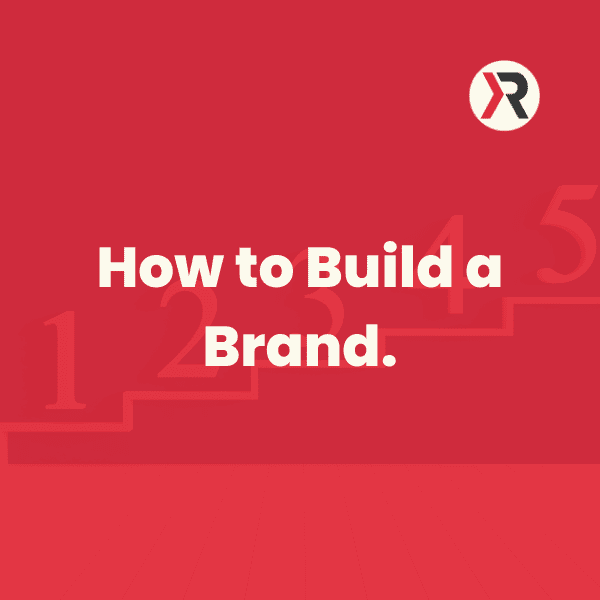How to Build a Brand in 9 Easy Steps
Make no mistake about it: a recognizable and loved brand is one of the most valuable assets a company owns.
According to a Nielson survey, it revealed 59% of consumers prefer to buy new products from brands familiar to them.
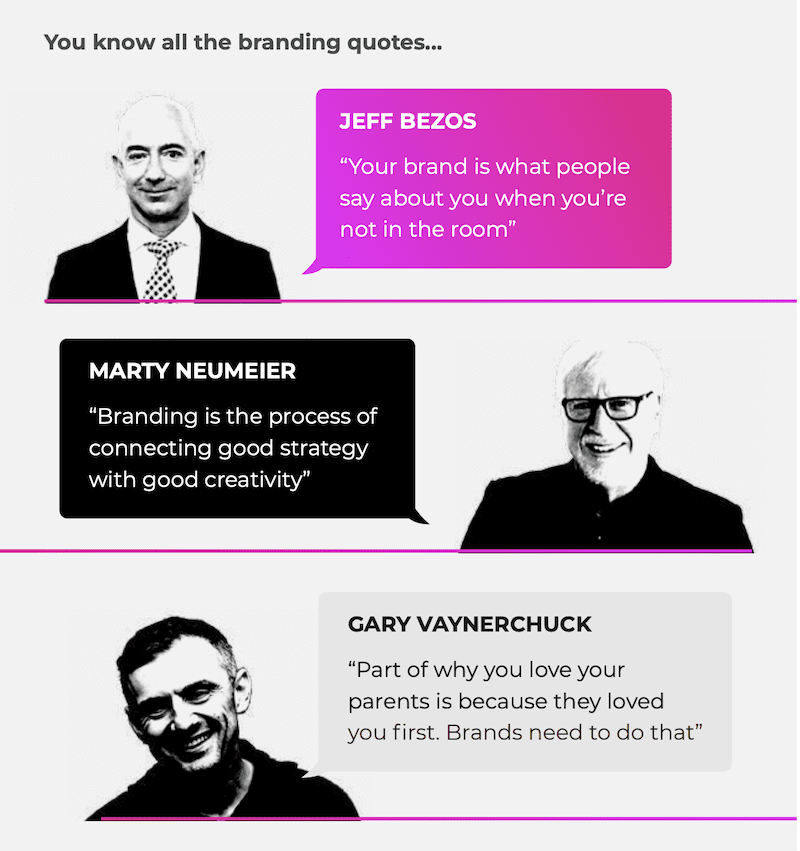
Credit: https://brandmasteracademy.com/
As a small business, you may be competing against big brands with devoted customers and unlimited marketing budgets. That’s why you have to find ways to stand out—with a solid brand building process of your own.
My favourite piece of advice to any entrepreneur is to build a brand, not just a business.
This is what will give you massive growth.
You’ll also hear “A Brand Is Not A Logo” telling you what a brand is not and leaving you with more questions than answers.
As you venture down the Branding Rabbit-Hole, the art of Brand Strategy comes into focus.
The key thing to note, is you will not make your brand in 10 minutes, it will take time and some effort to workout your branding. That said, these steps below will help you get started on the correct branding process.
How do you build a brand?
Branding is much more than just a cool logo or a well-placed advertisement. Before you dive in to brand building, let’s look at the quick definition.
What exactly is a brand?
Simply put, a customer’s overall perception of your company defines your brand.
Reminder – “Jeff Bezos, the founder of Amazon, puts it even better: “Your brand is what other people say about you when you’re not in the room.”
Your reputation is your brand!
A successful brand in today’s market must be consistent in communication and experience across many applications:
- Environment (storefront or office)
- Print materials, signage, and packaging
- Website and online marketing
- Publication of content
- Customer service and sales
- siteInternal (with employees) (with employees)
Is brand Building Simple?
The truth is that branding does not happen overnight… or even in a few months.
Building a brand is undoubtedly a process that necessitates a strategy. However, consistent effort will result in long-term relationships with your customers.
This can result in a steady increase in leads and sales, word-of-mouth referrals, and product or service advocacy.
What Is Brand Building?
There are a lot of big words used in marketing and branding, enough to make your head spin, so lets talk plainly and say it as it is.
It simply comes down to this.
- Understand your audience
- Define your unique value to them
- Communicate this message consistently
- Deliver on the promise of your message
- Do it again
- And again
If your uniqueness is actually valuable and you deliver on your promise… Simply add consistency and watch your brand grow. That’s it.
What is the definition of branding?
“The promotion of a particular product or company by means of advertising and distinctive design.”
Is creating awareness about your business using strategies and campaigns aimed at creating a unique (Brand Identity), long-lasting image in the market. Positive image + differentiation = success for a brand.
Brand strategy maps how to differentiate yourself, build trust, make yourself memorable, and appeal to your ideal customers. It will communicate your purpose, promises, and how you are solving problems for people.
This is the first step that you will have to take in building your brand from scratch (whether you are starting out, or already established). Building brand awareness with your target audience.
It is the same thing with your brand. You can see a brand strategy as the blueprint of how you want the world to view your company. Brand strategy is the crucial, fundamental part of building a successful brand.
It is one of the areas most businesses neglect, as they dive straight into design and marketing before brand development as a building step for a unique identity for a strategic marketing and strong brand name.
What is Brand Identity?
Brand is how the rest of the world thinks of a company.
Brand identity is the sum of all the things a company does to give its customers the right image. Even though these terms are sometimes used interchangeably, “brand identity” is not the same as “brand image” or “branding.”
Branding is the marketing strategy of shaping a brand in a way that makes it stand out.
What is brand identity, and why is it important?
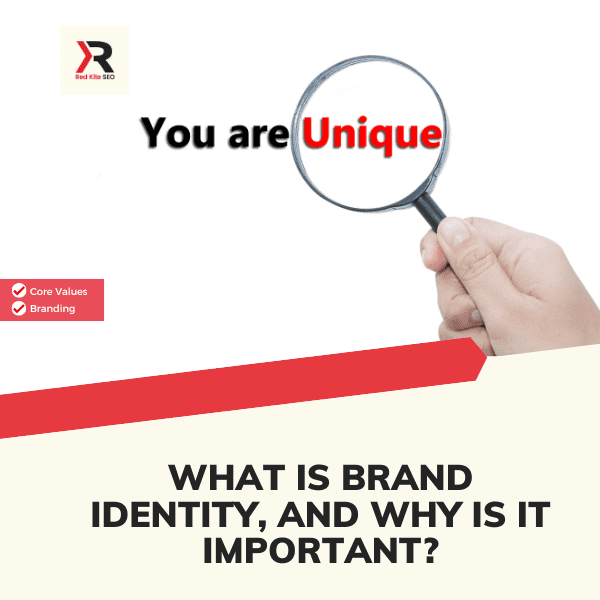
Your brand identity is all of the combined elements of your brand, including visual brand elements like logo and colour palette, and abstract brand values, along with an overall personality or “vibe”.
Brand identity includes:
- Brand colours
- Logo
- Content messaging
- Look and feel/aesthetic
- Brand voice and tone
- Brand mission, vision, and values
- Marketing message
- Website
- Product Packaging
- Business cards
- Email design
Creating a brand identity builds awareness of your product or service, and helps you rise above the competition. By bringing a unique voice to the conversation and mastering social media, brands can better connect with younger audiences and establish a more authentic online persona.
A strong brand identity has intangible value, creating a reputation of credibility and trust that extends beyond the problems you solve and the products you create.
9 Steps to Buiding Your Brand
Step 1. Discover the purpose behind your brand.

Every successful brand has a powerful purpose behind it.
And so should you.
It’s what you wake up every day loving to do for other people (and the world) through your product or service.
There are four questions you should ask yourself when defining a brand’s purpose:
- Why do you exist?
- What differentiates you?
- What problem do you solve?
- Why should people care?
You’ll use these ideas to inform the foundation of your branding, through a tagline, slogans, value propositions, voice, messaging, stories, and more.
Studies show that 50% of consumers worldwide say they now buy based on a company’s brand values and impact.
Leadership expert Simon Sinek developed an impactful model called The Golden Circle (he’s also the author of Start With Why—this book is excellent to read or listen to on Audible!)
The Golden Circle concept can help in identifying the purpose behind anything in business or life, really.
The 3 Parts to The Golden Circle:
- What – the products or services you offer to your customers
- How – the things that differentiate you from the competition
- Why – the reason you are passionate and why you exist
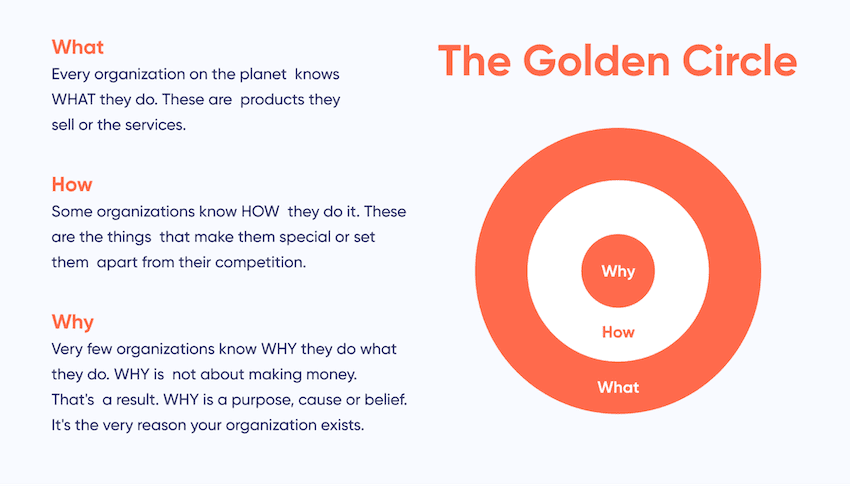
To Find Your Brand Purpose Answer these 7 Questions.
1. Why did you decide to start your own business?
It could be something from your past that had an effect on you, a good or bad experience, a realisation, or a problem that needs to be solved.
Think about what led you to where you are right now. Find the real reason (and it shouldn’t be “I need to make money”).
2. What are your unique strengths?
To stand out as a brand, you’ll need to set yourself apart. Explain how your business is different from those of your competitors and other options.
Strengths could be something that is unique to the business, a process, experience, skills, or something else. Just remember: unique.
3. What do you want people to remember you for?
Write down what your ideal client or customer would say in a detailed, positive review. Then, choose the ideas that make the most sense for your brand.
Step it up a notch and boil it all down to ONE idea.
4. What are the problems you want to solve?
Don’t just offer a product or service on the surface level. Tell people what you can offer them in terms of value, benefit, outcome, or change.
Does this affect people in the future? Does it also have an effect on society or the environment?
5. What about the world do you want to change?
There is probably a problem in the world that you can solve.
Tell me what you bring to the table that could help solve this problem for all of your ideal customers or clients. Tell us what you think about the solution.
6. What would you like to change about your field?
You wanted to do something different when you started your business. Maybe it’s because there was no solution to fix it. Maybe the companies that offer solutions right now are missing the mark.
Tell us how you would change a business if you could do it in a snap.
7. What do your clients want to change?
People want companies to have an effect not only on their lives but also on their community, society, or the world as a whole.
Can you tap into this by understanding their values, beliefs, fears, and wants, and how they match up with your own?
Step 2. Looking into Your Industry Competitors Brands.

You should never copy what the big brands in your industry are doing. But you should know what they are good at (or where they fail).
The goal is to stand out from the other companies. Get a customer to buy from you instead of someone else.
We’re always thinking to figure out how to make a brand stand out from what’s already out there. Don’t skip this step of building your brand.
Find out about your main rivals or benchmark brands. For example, study how well they have done at building a brand name.
For a brand name to work, people should be able to easily recognise and remember it.
Answer these basic questions first.
- Is the competitor’s message and visual identity consistent across all channels?
- How good are the goods or services of the competitor?
- Does the competitor have customer reviews or social mentions you can read about?
- How does the competitor market their business online and in person?
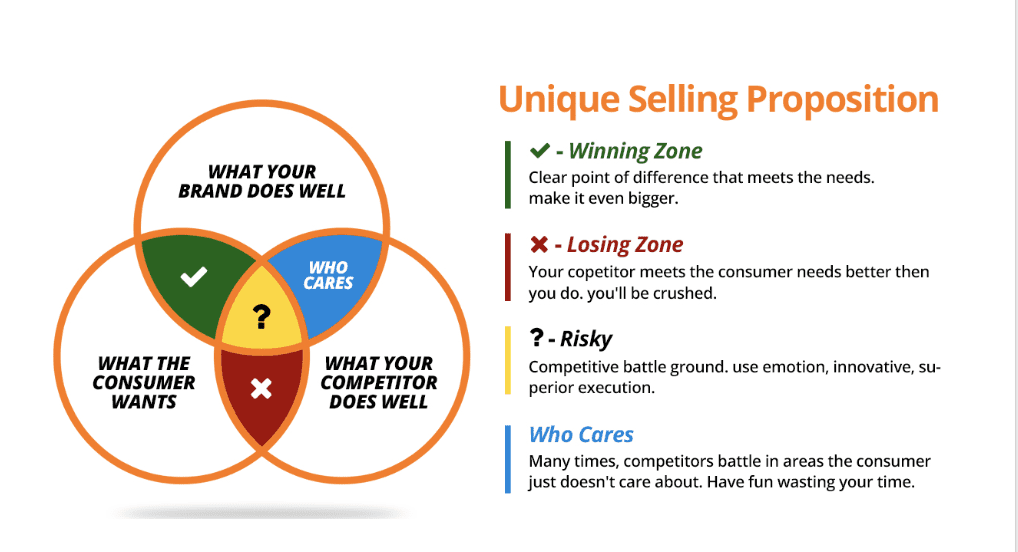
Choose a few competitors for your comparison. Two to four (2-4) is a good number. You might want to look at other local businesses to compare yourself to well-known brands.
Competitor research (or market research) is one of the most important parts of finding and defining your brand’s positioning.
Step 3. What is Your Brands Target Audience?
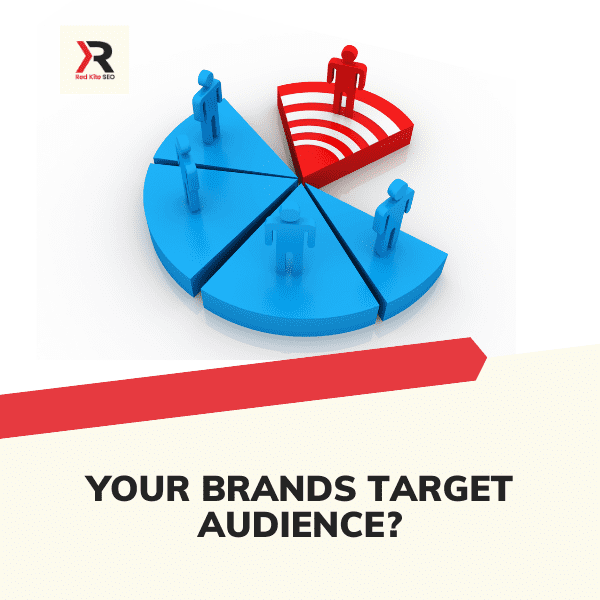
The foundation for building your brand is to know who is your target audience
Once you know this, you’ll tailor your mission and marketing message to meet their needs. This will help ensure that your brand message comes across crystal clear to the right people.
What is My Target Audience?
5 Ways to Determine Your Target Audience
- Look at Your Customer Base and Carry Out Feedback/Surveys.
- Market Research and Find any Industry Trends.
- Analyse Your Competitors.
- Create Customer Personas.
- Use Google Analytics.
What is a Customer Persona?
A customer persona (also known as a buyer persona) is a semi-fictional archetype that represents the key traits of a large segment of your audience, based on the data you’ve collected from user research and web analytics.
What is a Brand Persona?
A brand persona is a character that represents your company, including its goals, how it wants to be seen by customers, and what it can offer. This is one of the most important tools for building a successful online brand for this reason. Building a brand persona is only one part of a full strategy for an online presence.
Watch this video for a more indepth understanding of What is a Brand Persona?
How do you make a brand persona?
It may sound obvious, but you need to have your brand established before you can create a brand persona.
Creating a brand strategy is not a clear-cut process because you can’t control everything. In many ways, your brand is shaped by how your customers see you. This means you need to do research on your audience and work with the perception they already see you have.
This is where a brand personality comes into play: you want to brainstorm human traits to go along with your business.
A great place to start is:
- Sincerity: This is a brand personality that is down-to-earth and often emphasises things like hand-made materials, roots in a small town, or family ownership.
- Excitement: This brand’s personality is bold and up-to-date. Most of the time, these brands appeal to people’s sense of adventure and creativity.
- Competence: This brand’s personality focuses on trust and safety. Brands that want to look like they know what they’re doing.
- Sophistication: This brand is for people who like class and luxury. This doesn’t always have to be about how much something costs; it can also be about a general sense of taste.
- Ruggedness: This brand is all about strength and being outside.
Even though you don’t have to use this exact structure, it’s important to make a list of things about yourself. These must, of course, fit with the product or service that your business sells.
You can read more about this at creating a brand persona.
Step 4. Find the Key Benifits & Qualities Your Brand Offers

Start by answering the following questions about your customer. Look back at the work you did on Target Market Analysis for help.
- What are your ideal target customers trying to achieve?
- What is the job they want to get done?
- What’s their biggest problem?
- What’s their biggest frustration?
- What’s their greatest desire?
- How does your offering make them feel?
Keep this handy as it helps to define your key benefits. Your key benefits should be relevant and compelling. When you deliver on those benefits, you create superior value.
There are three kinds of benefits you can use to create that value:
- Functional benefits describe what your product or service does for your customers. These are your offering’s attributes, or “the job to be done.”
- Economic benefits describe what your product or service means to your customers in terms of time or money. Economic benefits appeal to your customer’s head, his or her rational part.
- Emotional benefits describe the way your product or service makes the customer feel. Emotional benefits appeal to your customer’s heart, which is why they are the most powerful benefits.
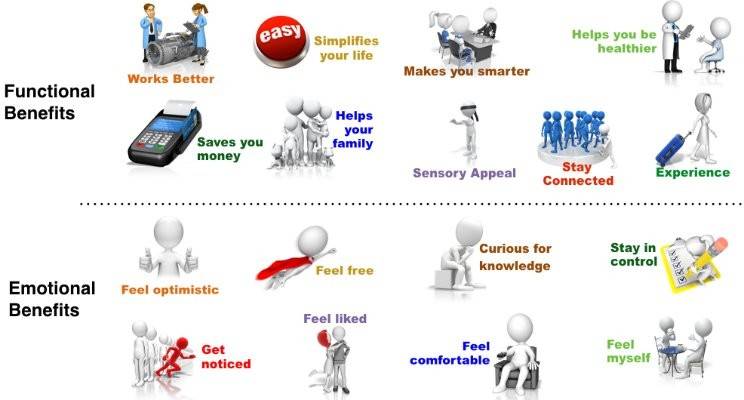
Credit: https://www.linkedin.com/pulse/how-identify-key-benefits-your-brand-stephen-lynch
Most companies don’t have a hard time coming up with functional benefits. They come right from the features, which is why so many companies use functional benefits as the main focus of their marketing.
But functional benefits are usually generic to the category, meaning that all of your competitors can say pretty much the same thing.
Functional benefits are important because your customers need to know what your product or service does for them. But they are so easy to copy that there is no advantage that can last.
How about economic benefits?
You help the economy when you help people get more for their money.
But you can also do it by selling a similar or better product at the same price or by lowering the total cost of ownership over the product’s lifetime.
Saving people time is another way to provide economic value. Economic benefits are more powerful than functional benefits because they look at your product or service from the point of view of the customer.
What about Emotional benefits?
Benefits that speak to the heart are the most powerful. Emotional benefits are the ways your product or service makes your customer feel. The way your product or service makes people feel is what they are really buying.
To describe your emotional benefits, make a list of all of them. How do people feel when they use your product or service?
Emotional benefits include:
- Feeling in charge
- Safe & secure
- smart
- Powerful
- Stylish
- relaxed
- Pampered
- Loved
- Rebellious
- Cared for
- Heroic
- Adventurous
- Sexy
- Fun
- Sophisticated
- Wise
- Free
- At peace
Among many others.
You need to identify what your top benefit is in each of these three areas. Choose your top:
- Functional benefit
- Economic benefit
- Emotional benefit.
These three Key Benefits will be the foundation on which your Brand Promise is built.
What is a Brand Promise?
Your Brand Promise should tell your customer what they can expect to receive from your brand. You’re much more likely to be successful if you state your promise bluntly and clearly.
A brand promise is something that customers can expect to get from a company every time they interact with that business. When a company makes a promise, the more it keeps that promise, the stronger the brand value is in the minds of customers and employees.
Step 5. Create Your Brand Voice
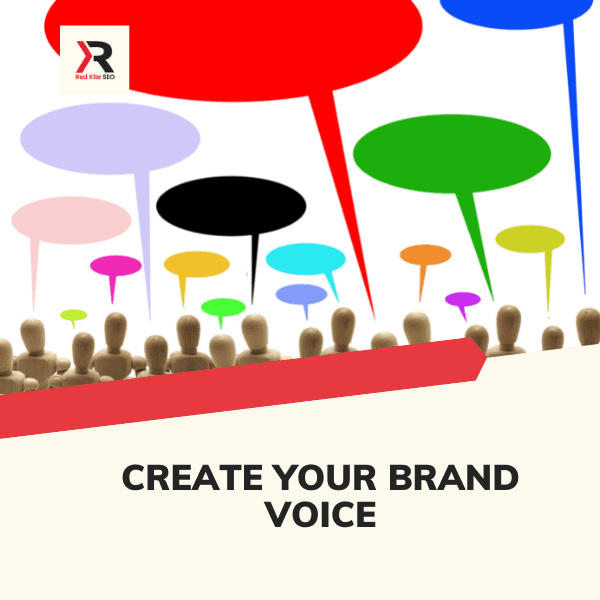
Why brand voice is important?
Brand voice is the bridge between your brand and your audience. It’s how you get to show your audience not just what you do or offer, but who you are as an organisation and your personality and values.
When you develop a brand voice it helps define your brand and set you apart from your competitors, improving customer reach and recognition. The better your customers feel they know you, the more likely they are to perceive your brand positively.
After multiple positive interactions, you’ll be seen as a credible and trustworthy brand.
“For 83% of customers, trust is a mandatory prerequisite to making a purchase.”
What is the Difference Between Voice and Tone?
In addition to your voice, it’s also important to understand the tone.
- Voice: This describes your company’s personality. It’s consistent and unchanging.
- Tone: The emotional applied to your voice. It adjusts to what’s suitable for a particular piece or message.
While your voice remains consistent, the tone may change according to the context of your messaging. Watch the video for 5 tips for creating a brand voice and tone.
How to Create Your Brand Voice?
Your brand personality is your language and tone of voice, which is another opportunity to display the characteristics your customers are attracted to. Whether it’s corporate and professional language or a casual and friendly tone, a communication style your audience is attracted to is key to your message.
How to Create a Brand Voice for Your Own brand
1 – identify the characteristics that your target audience is drawn to
2 – Identify What They Want From Their Brand
3 – Align Your Brand With An Archetype (persona)
4 – Develop Your Own Brand Voice Using The Characteristics
Watch this video for help on creating your brands voice
What is a brand archetype?
A brand archetype is a representation of your brand as a persona based on 12 key human desires and values, such as safety, power, and belonging. The idea behind creating your archetype is to build a brand narrative and create an emotional connection with your target audience.
Step 6. Build Your Brand Story
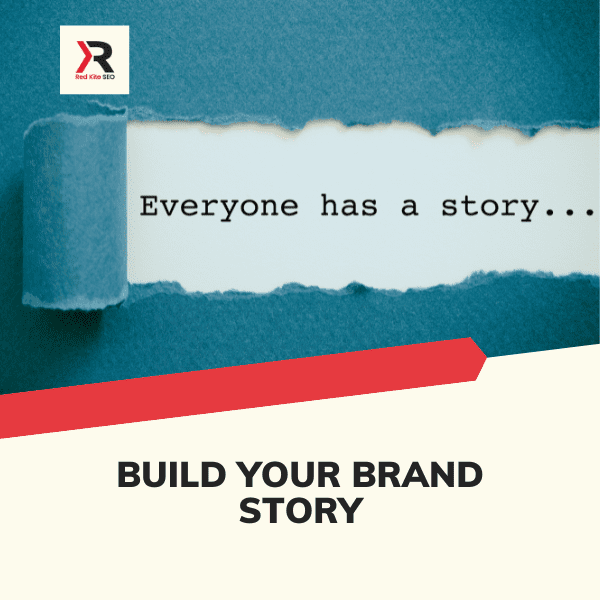
Well, normally everyone loves a good story, so what is your brand story? Let’s look at how to get started.
How to Be a Better Brand Storyteller
- Add Personality. Brand stories should be told with the brand persona and the writer’s personality at centre stage.
- Keep Your Story Simple. …
- Focus on Why Your Brand Exists.
- Connect With Your Customers.
- Remember Customers Buy Your Story, Not Just Products.
- Get Others To Tell Your Story.
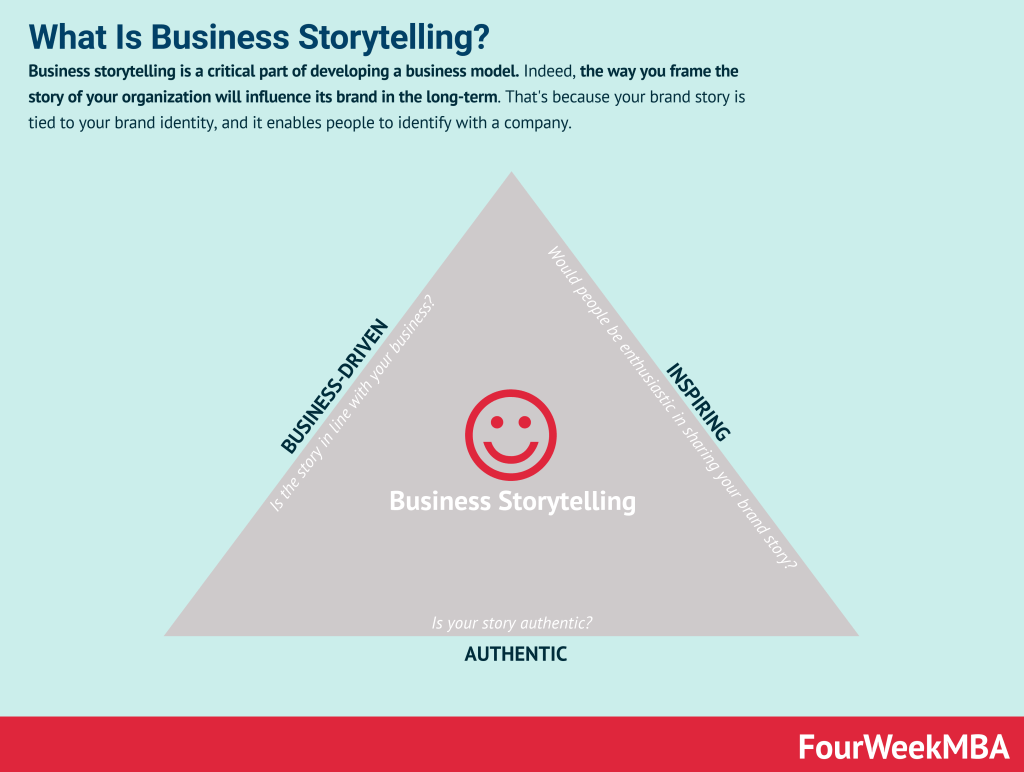
Credit: https://fourweekmba.com/business-storytelling/
Your Brand Story Needs Personality
Brand stories are not marketing materials. They are not ads, and they are not sales pitches. Brand stories should be told with the brand persona and the writer’s personality at centre stage. Boring stories won’t attract and retain readers, but stories brimming with personality can.
Basically, personality drives the story, but the story isn’t a biography of an individual. It’s the evolution of an entity told with personality.
Keep Your Brand Story Simple
Keeping your company’s brand story straightforward:
- Problem
- Solution
- Success
That’s it. If we try to cram more into the story, you’ll lose the momentum that is vital to its success. Simple stories are better.
Every story has a beginning, a middle, and an end. The three-part model mentioned above carries this natural progression:
- Beginning: Problem: Explain the problem that you set out to solve.
- Middle: Solution: Describe how you solved it.
- End: Success: Get excited about the success this produced.
This is the form of a story that people expect. Be careful with the ending. It shouldn’t feel like the end of the road, but rather the beginning of a new adventure. Simple stories are more trustworthy.
Step 7. Create a brand style guide to ensure a consistent brand identity.
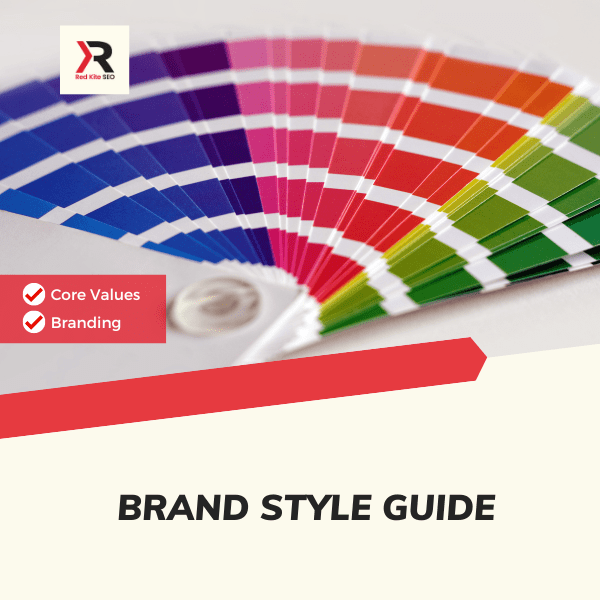
Basically, a brand style guide, is a cross over from a moodboard to written instructions on what is used when publishing your brand online or in print. Building a brand style guide helps build awareness and trust using your stamped out guidelines that cover everything from your brand voice, design to typography.
Brand Consistency
A thorough brand book outlining these guidelines makes it easy for anyone in an organisation to effectively represent the brand. With a solid knowledge of brand elements and brand voice, designers, copywriters, and developers can all work with the same building blocks.
What is a Brand Style Guide?
A brand style guide is a rulebook that specifies every aspect of the look and feel of your brand. Apart from being used internally, a brand style guide is shared and used with copywriters, graphic designers, media, website designers and marketing agencies to brief them on how to communicate your brand properly and consistently.
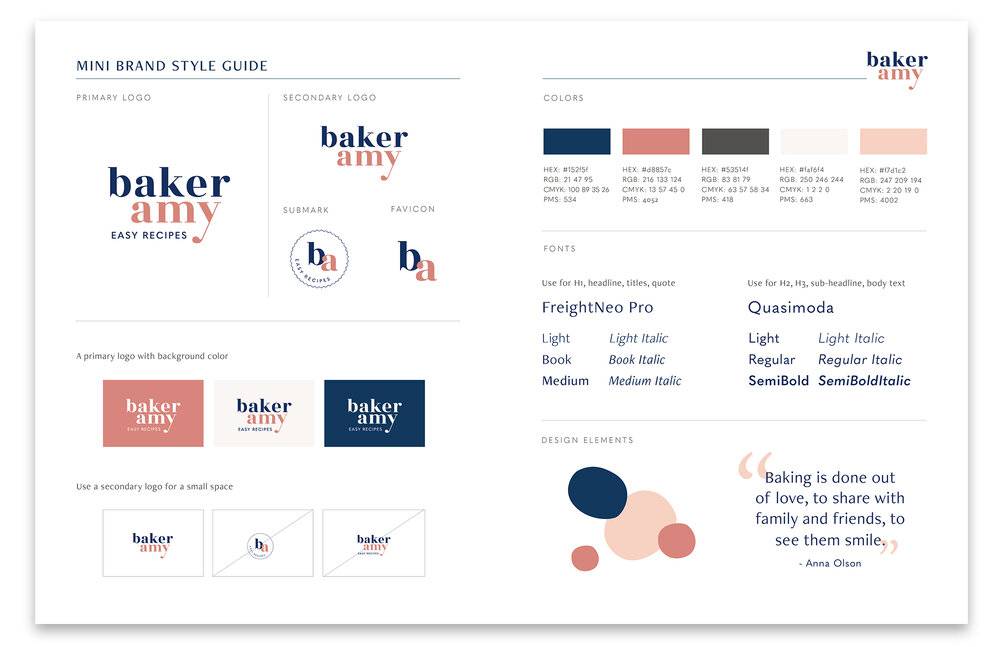
Credit: https://natsuminishizumi.com/blog/how-to-create-a-simple-brand-style-guide
Why is a Brand Style Guide Crucial?
You want customers to recognise your brand whether they see it on their phone, on TV, or on a billboard. The best brands use common visual elements and styles to make their brands easier to recognise
A brand style guide is an important tool for making sure your company’s work is consistent and flows well together. This is especially true if you work with creative partners like freelancers or a marketing agency.
A Brand Style Guide Describes the visual identity.
Your style guide will include steps 1 to 6 listed above, plus all the visual elements. Since a brand’s first impression is often visual, it’s important to codify the details of its graphic design elements. A brand style guide should have rules about how and when creatives can use the assets in the brand kit.
Your brand kit – Guide will include the following points:
Colour Palette
Set up the main colours and the secondary colours. Give the hex code for each colour so that a designer can get the same exact shades whether they are using CMYK colour codes for printed materials or RGB for the website.
Typography
Make notes of the two or three typefaces used by the brand example is Headings, sub-headings and normal font. Explain how each font will be used and what size, spacing, and weight you want. It’s important for designers to stick to the font family that best represents your brand. Be sure to include web styles so developers know how to make uniform pages.
Photography
Define the brand’s photographic style. Is it candid or posed? Professional or casual? Is it a purple-haired young woman at a music festival? An elderly couple walking on the beach? Refer back to your buyer personas to define the types of photos that will appeal to each.
Iconography
From the icons for social media to the buttons for mobile apps, the details matter. Icons should be easy to understand and fit in with the other design elements of the brand. Icons should work with logos and fonts to give all communications a unified look.
Checkout another mock up example of a brand style guide.
Step 8. Create a brand logo & tagline.
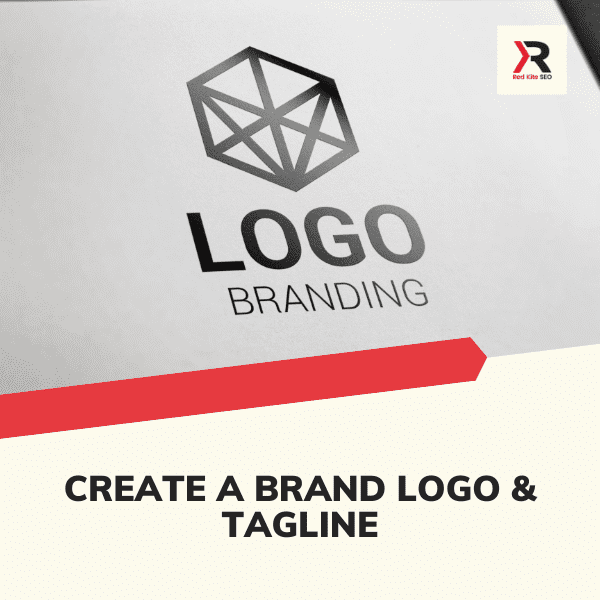
To start, lets say we will integrate your logo design into your brand. Your logo design will include many aspects of your business and use your brand style guide.
Your logo will be a big part of how customers see your business for the first time. It will tell them about your brand and help them decide if it’s right for them.
Get a great logo: Get a professional logo that represents your brand and start using it everywhere.
How to Create Your Brand Logo
Before you say hey, logo designer person, I need a logo for my business, stop!, and plan out what your wanting/needing for your brand using the points below to help guide you.
How to Make a Logo
- Know Your Brand Personality. You should have a clear idea of the brand personality you want to convey before you start designing a company logo.
- Analyse Your Competition.
- Choose a Design Style.
- Decide on a Type of Logo.
- Pick Your Fonts Carefully.
- Choose Your Colours Wisely.
- Keep it Simple.
- Ask for Feedback.
So how can you create an effective tagline for your brand?
Here’s some advice from a marketing and branding consultant:
- Focus.
- Make it meaningful: Convey a message that your target audience will care about and understand.
- Make it memorable.
- Keep it short.
- Say it out loud.
- Integrate it into your logo design.
Here are some logo and tagline examples.
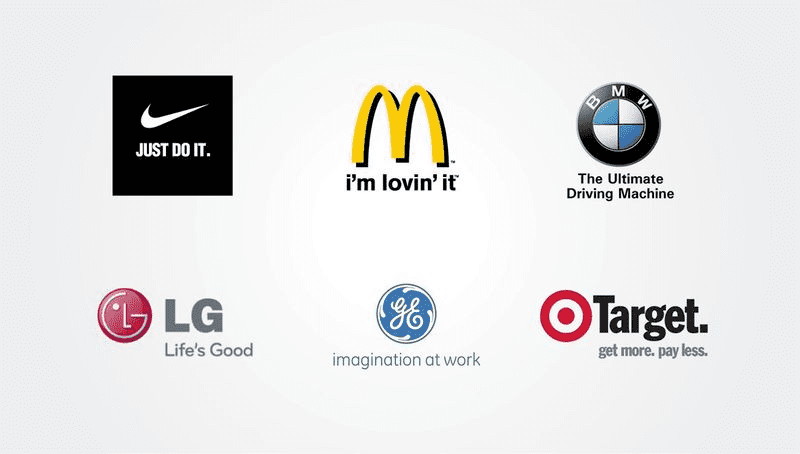
What is a tagline vs a slogan?
A slogan is more advertising focused, and a tagline is more public relations focused, meaning slogans are used to sell an item and taglines raise awareness about the overall brand.
Unlike slogans, taglines don’t tell customers what your company does. Instead, taglines narrow in on a certain aspect of a company.
Step 9. Integrate your brand into every aspect of your business.
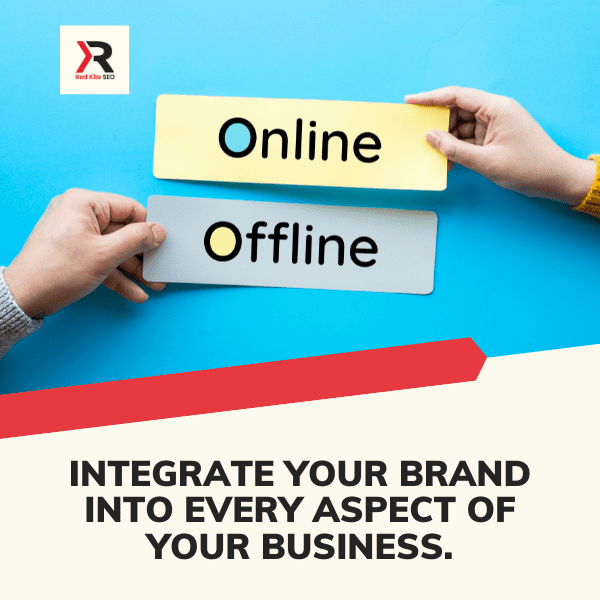
Once you have a professionally designed logo, clear message, and brand story that represents your brand, it’s time to use it everywhere.
To get started, you will need to keep your brand style guide to hand as you start to update all parts of your business starting with the list below:
- Social media profiles
- Website design
- Business card
- Letter heads
- Print advertising
- Graphic designs
- Influencer Marketing
- LinkedIn publishing
- Podcast
- Infographics
- Signage (Shop & Vehicle)
- Tradeshows
- Networking
- SEO (Search Engine Optimisation)
- Paid adverts
- Remarketing campaigns
- Customer interactions
Here’s a quick reference checklist.
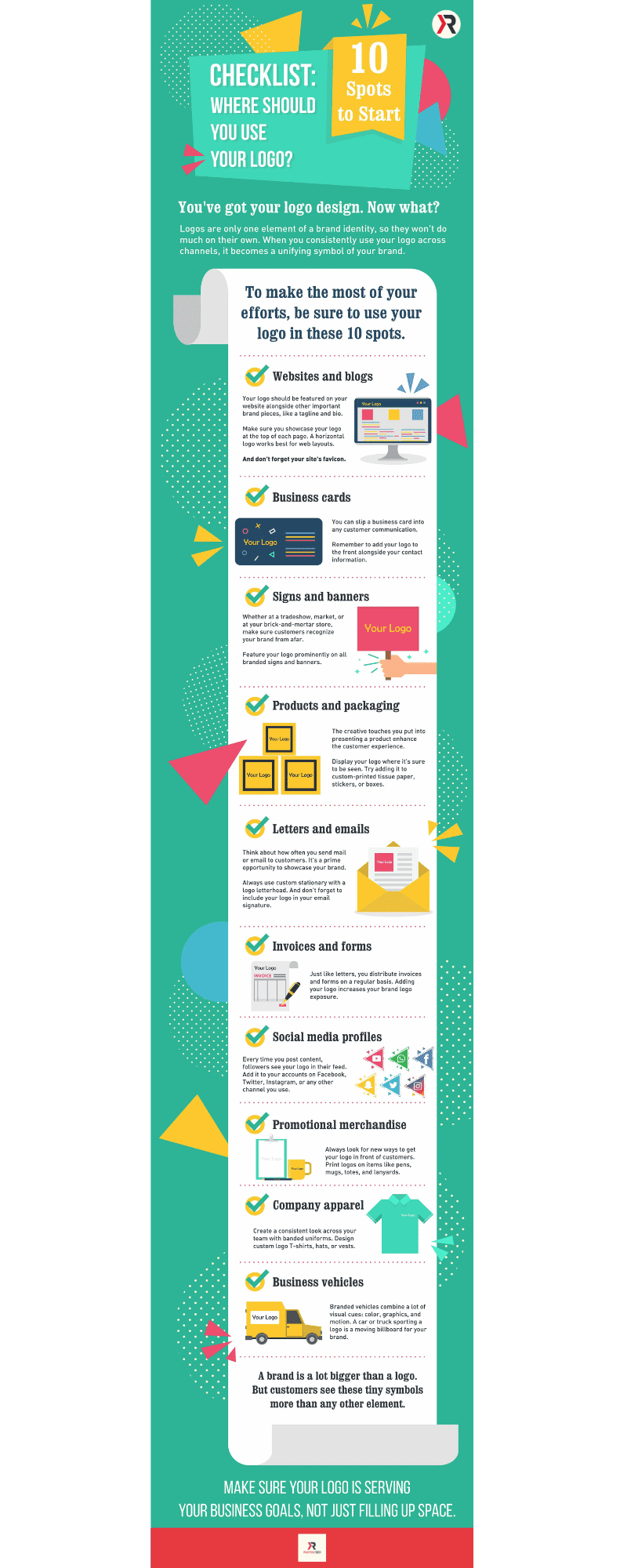
Conclusion
To sum it up, we have presented the 9 steps to influence ways to market your brand. We understand that this may be a lot to take in, or that you may have already started the first few steps in the right direction. Why spend all this time, effort and money on your branding?
Why is brand ROI important?
Essentially, a strong ROI from branding offers a way to create higher price points and a pricing premium, generating higher profitability. With good branding and an engaging brand story, the return on investment may result in individuals who are willing to pay extra for a product or service due to its perceived value.
My Last Words of Advice.
Please be patient, give yourself time to discover and work on your brand, it will take time. Each step gives you another opportunity to position your brand in the minds of your target audience.
If you are successful, they will remember your brand for the reasons you come up with as you develop your strategy. This will affect their decision about what to buy. Today, people expect their brands to be crystal clear in their messaging and how they fit into their lives.
If you are struggling for time to work on your brand
Alternatively, there are a lot of Brand agencies in the UK that will help you, however, you will need to find the right agency that can help with your specific needs, example, some agencies are leaders at creating your brand story, while other companies specialise in the graphic design elements.
So checkout a branding services portfolio, ask for recent projects and references. If you want help from Red Kite SEO, we work with a handful of brand consultants and agencies, depending on what you require.

Pete Hogg is an accomplished SEO consultant with a proven track record of driving organic traffic and boosting online visibility. With 8 years of experience in the ever-evolving world of digital marketing, he has helped businesses achieve top rankings on search engines. A passionate advocate for SEO best practises, Pete Hogg combines technical expertise with a deep understanding of content strategy to deliver results that matter. When not optimising websites, he enjoys wheelchair rugby. Connect with Pete Hogg to take your online presence to the next level.

